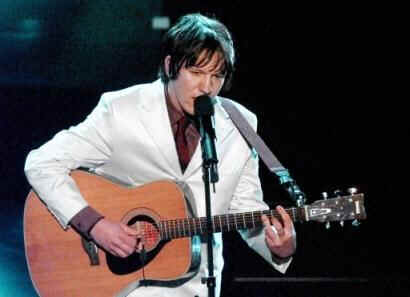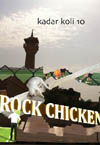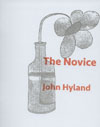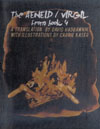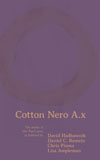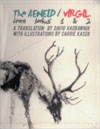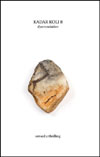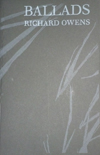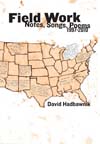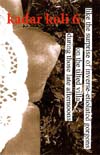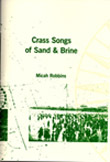Elliott Smith died a little over seven years ago — October 21, 2003. I was on a miserable flight home from Germany when I found out.
The flight was miserable because I’d been deathly ill for the last week of my stay, lying on the floor of my friend’s apartment in Leipzig with an ear infection and a fever. The infection was so nasty that I couldn’t hear anything out of my left ear, and I had to pump myself full of medicine just to get on the flight.
I hadn’t much listened to Elliott Smith prior to that. In fact, around the time of my trip I’d been on a major Leonard Cohen kick, which my German friend happened to share, and during the worst of my illness I stared out her windows and listened to her records and my CDs while she went out to work.
We also talked about learning to play music. She was interested in taking bass lessons, and I toyed with the idea of finally learning guitar. Something about this illness and hearing about Elliott Smith, even though I wasn’t a huge fan up to that point, made it snap into place for me. Upon returning home, once I’d recovered, I bought a Takamine F-360 and began to take lessons.
And I began to listen to Elliott Smith.
*
I had already known Sonny Smith for a long time at that point. We’d met via mutual friends — experimental dancers, mostly, in the young, bohemian set in San Francisco centered around places like 848 and the old Dancers Group Studio — now, if I’m not mistaken, a Skechers shoe store. A lot of people, myself included, were doing the usual dilettantish stuff, putting on shows, flirting, having affairs, becoming involved in various issues… essentially being young and trying to figure out who we were, and what this whole art thing was about.
Sonny already seemed to have a pretty good idea. He quickly secured a weekly gig at the Rite Spot, on the corner of 17th and Folsom Sts., and that became a sort of unofficial hangout for our crowd. Countless evenings were spent there, sitting at the candle-lit tables drinking drinks and coming down from the high of whatever show we’d just been to or put on, with Sonny pounding the upright piano or playing guitar as he sang his songs.
One memory in particular stands out: The bar is full, the noise level of the various conversations has reached an ecstatic pitch where it’s not so much words anymore as competing tones of desire and anguish, the thrust to have oneself heard… and weaving above and throughout it is Sonny’s voice and his music, not trying to drown out the noise of the talking but melding with, playing off it…
Somehow that perfectly captures the sense that even then he was doing something both part of and separate from the usual desperate art chatter. Someone was recording that night, and I have a tape of it, still.
*
I have yet to attempt to learn one of Elliott Smith’s songs, but I understand that they’re tremendously difficult. Smith was a huge fan of the Beatles, and the sweet melodies and complex harmonic arrangements of his music constitute almost its sole value, for me, all these years later. At his best he is a garage-version Paul McCartney to Kurt Cobain‘s punk-version John Lennon (though, given Smith’s incredibly deft guitar parts, perhaps the better comparison is George Harrison…).
But to put it bluntly, Smith has almost no content to his lyrics aside from the anguished cry of the junkie. “Leave me alone, I’m all right” is the constant refrain, and almost the only message he manages to get across. To his credit, he faces the contradictions of his addiction head-on, for the most part, and his ability to turn a phrase and raise junk talk to the level of poetry is probably the absolute limit of what can be done with such narrow subject matter.
Take a song like “Needle in the Hay” — not even the best example, but the first that comes to mind:
Your hand on his arm
Haystack charm around your neck
Strung out and thin
Calling some friend, trying to cash some check
He’s acting dumb
That’s what you’ve come to expect
Needle in the hay
Needle in the hay
Needle in the hay
Needle in the hay
He’s wearing your clothes
head down to toes, a reaction to you
You say you know what he did
But you idiot kid, you don’t have a clue
Sometimes they just get caught in the eye, you’re pulling him through
Needle in the hay…
The deceptively simple diction and rhyming — Smith draws out “come” to rhyme with “dumb” and then lets “expect” return to “neck” and “check” — mingles with his remarkable punning on the “needle” motif to push the whole metaphor into a poignant and painful place. A needle is never just a way to deliver junk for Smith; not only do we get the prodigal-son sense of loss (“needle in the hay”) but, obviously, the “eye of the needle,” which brings in not just the idea of sewing but the Biblical reference as well.
This is a trademark of Smith’s. It’s ultimately unsatisfying, though, to anyone not a junkie, anyone looking for him to take this gift for insight and wordplay into an area that says something about the larger human condition.
*
A recent NY Times story about Sonny Smith and his band, Sonny and the Sunsets, came to my attention the way so many things do these days, via Facebook. Having moved away from San Francisco five years ago, I’ve been following the ongoing saga of his musical adventures from afar, in Texas, and now in Buffalo. When I saw him play with the Sunsets at a club in SF during a visit several years ago, I felt a huge sense of relief that he’d broken through what seemed to me a long, lonely struggle with his music, and tapped into a place that felt joyfully childlike and fun, as if music and art had become once again a way of exploring youthful fields of imagination.
There was always that sense with Sonny’s music, which is part of what attracted us to it all along — one of his early songs, “Let Me Be Your Baseball Player,” hilariously re-imagines the typical lover’s plaint in terms of the American pastime. But I also knew that he’d gone through dark periods of frustration at the grind of being a serious musician who had reached a certain level of notoriety and respect around the Bay Area (with occasional, increasing forays into New York, and up the West Coast) but little attention elsewhere, and none from the “industry.”
Smith could have done many things. He could have quit. He could have gotten a “regular” job instead of the seasonal, itinerant, side jobs he so often did, which allowed him to take off on tours and studio work. He could have, not exactly “sold out,” but attempted to make his music more marketable from a mainstream perspective, so that he could be picked up and promoted by a larger indie label. Many of his peers did one of these things.
Instead, with his band Sonny and the Sunsets, he seemed to settle in to a more collaborative, free-wheeling space. He’d always been collaborative and genre-bending, with a fascination for theater, film, and visual art alongside his musical focus, but now he took that to another level, with projects like “100 Records,” the brilliant conceptual series of his that began to draw the attention of the art as well as the music world.
*
This is where the stories dovetail, for me, to the extent that they do at all; in every other sense, Elliott and Sonny Smith have nothing whatsoever in common as musicians or human beings (aside from, obviously, that last name). Elliott Smith often lamented the loss of his early days as an obscure musician with his band Heatmiser. As he progressed from one album to the next, increasingly solo, his junk-talk lyrics hemmed in his music thematically, to the point where there was little for him to sing about beyond the endless cycling through the disappointments and relapses of that life.
I can’t help but wonder what might have happened if he’d managed to form another band and just played music again, and shifted himself into a whole new field of material to explore.
Not to make a hero out of Sonny, but to me, this was the particular triumph of the Sunsets and the recent projects — simply to have endured and reached a further space of collaboration, comradery, and creativity. It’s always a shock to see the name of someone you know in a headline; but somehow it wasn’t that surprising, given all the activity of Sonny and the Sunsets the past few years, to find them characterized as “one of the hottest indie bands in the country.”
*
As a final note, just the video, below, for the song “Death Cream,” which perfectly captures the relationship of the music to visual art and the role of imagination in the lyrics. It’s a dark topic, but inflected with sci-fi weirdness and humor that widens the scope of the song. Elliott Smith simply had no way to conceptualize death other than through the lens of junk. Sonny Smith’s song, by contrast, seems somehow both more innocent and (perhaps for that reason) more haunting.

